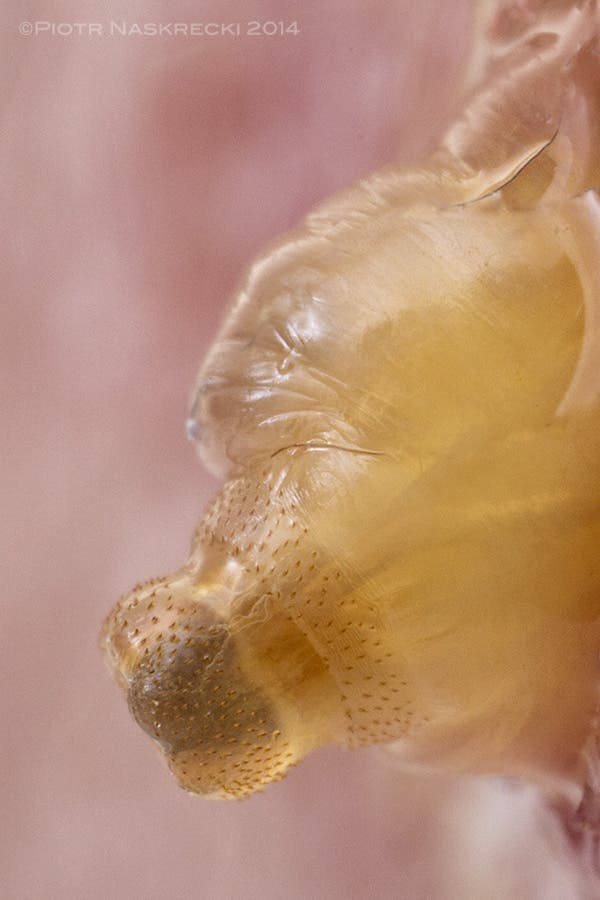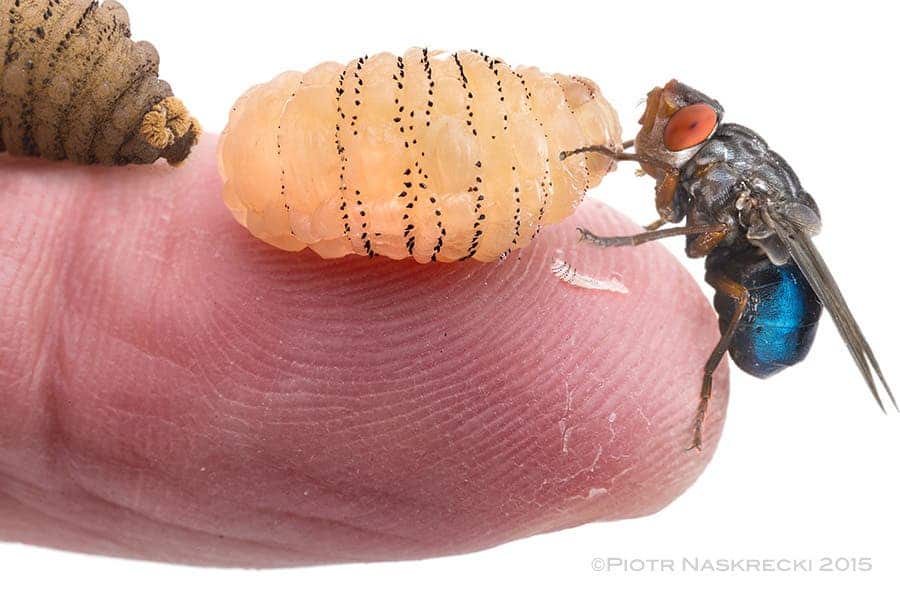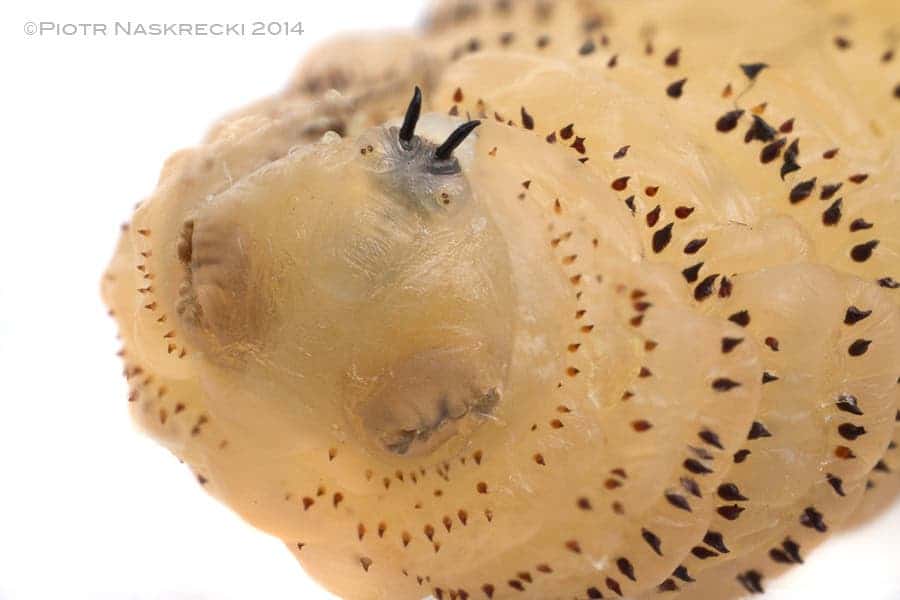Piotr Naskrecki, a Harvard biologist, did what few people would have the courage to do – he let maggots grow inside his skin, then documented the entire process. The result is, while very gross, spectacularly interesting. Proceed at your own risk.
I’ve got you under my skin
The Human Bot Fly from Piotr Naskrecki on Vimeo.
When Piotr Naskrecki traveled to Belize last year, he found himself riddled with tiny parasites under his skin. Several human botflies (Dermatobia hominis) infected him through mosquito bites. Botfly eggs are so small that they are often laid on mosquitoes; when the mosquito bites, the eggs simply fall off, go into the flesh, where they start growing – protected by the host’s skin. This type of infection can be very dangerous for humans as well as other mammals.
When he realized he was infected, Naskrecki carefully extracted most of the parasites using a tiny venom extractor. He noted the many rows of spines the tiny larva had developed in order to grip onto his insides. However, he then did something only a very brave scientist could do – he left two larva under his skin, allowing them to grow.
“It took two months for the larvae in my skin to reach the point where they were ready to emerge. The process took about 40 minutes,” says Naskrecki in his video. “It was not particularly painful, in fact, I probably would have not noticed it if I had not been waiting for it, as the botfly larvae produce painkillers that make their presence as unnoticeable as possible.”

“That’s a nice-looking butt – I knew that something was amiss hen a strange tube started poking out of my skin. This turned out to be a bot fly’s breathing tube”, Naskrecki wrote on his website.
He then admired the botflies go on, living their short lives. Because the flies have basically no mouth and can’t feed, they only live for a few days – enough to lay more eggs, which, hopefully for the botflies, would end up inside someone’s skin.
A passion for science

“A composite photo showing the stages of the Human bot fly’s development. The size difference between the first and the third larval instars is particularly striking”, Naskrecki wrote.
It’s pretty hard to watch the video of botflies emerging from Naskrecki, but it’s really interesting, and it has something else going for it: it’s extremely real. It’s raw, it’s insightful, and it shows an amazing passion for science – something which sadly, is often missing from mainstream science media. As US-based entomologist and photographer Alex Wild points out at his blog, Compound Eye, this is what nature documentaries should look like:
“This sort of project is, I hope, the future of nature documentaries. Mainstream programming has descended into fear-mongering, clickbait, and outright fraud, but the widespread availability of video technology offers a modicum of salvation.
Rather than hoping against hope that cable television might occasionally regurgitate a worthwhile series, scientists now have the tools to tell their stories themselves. As Piotr’s fly video shows, a real story about real nature, unembellished, can work”
You can read Naskrecki’s thoughts on the whole experience at his website.










